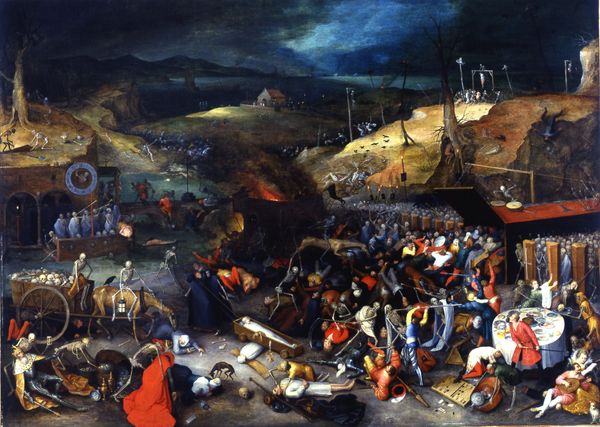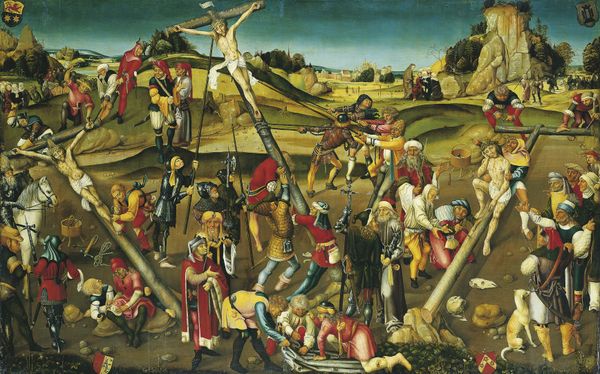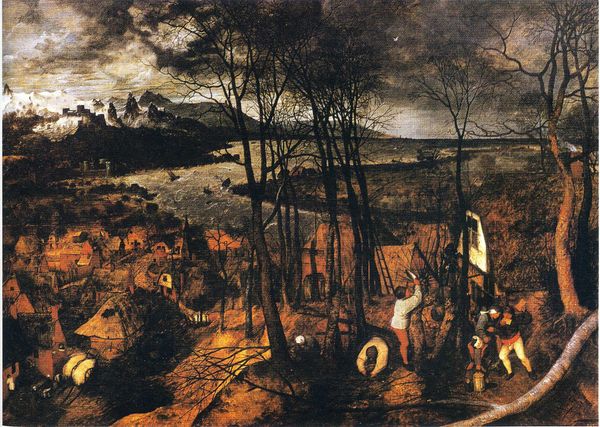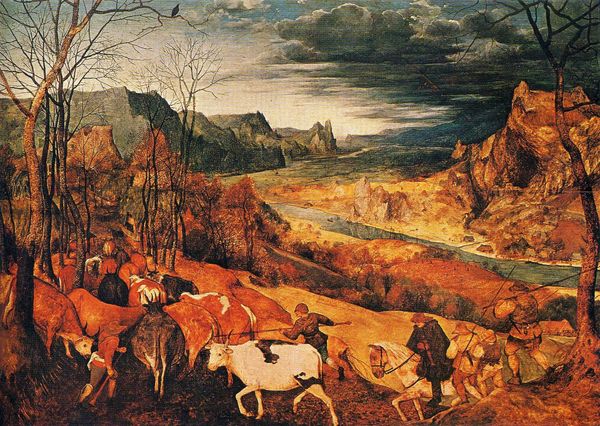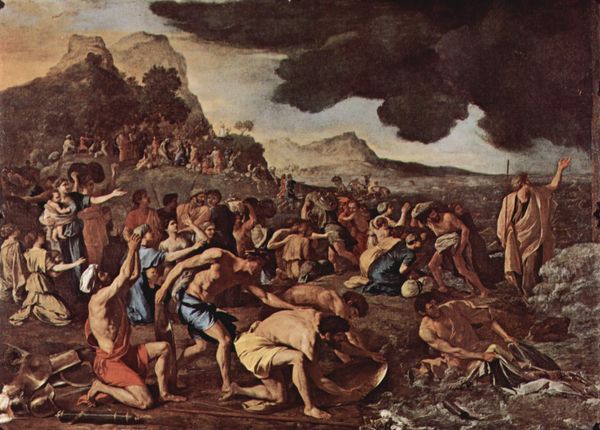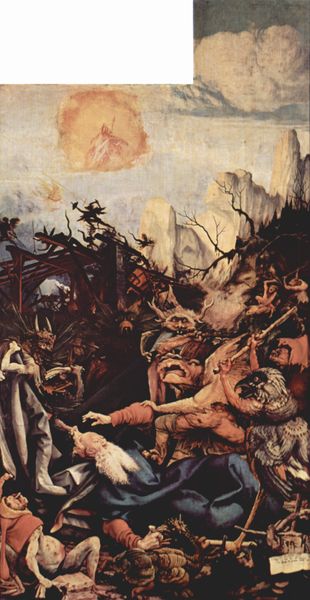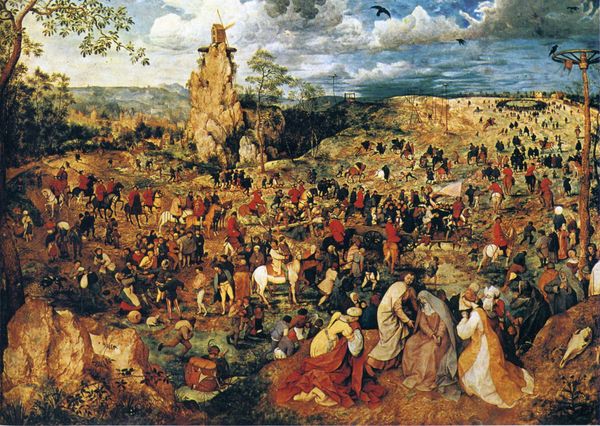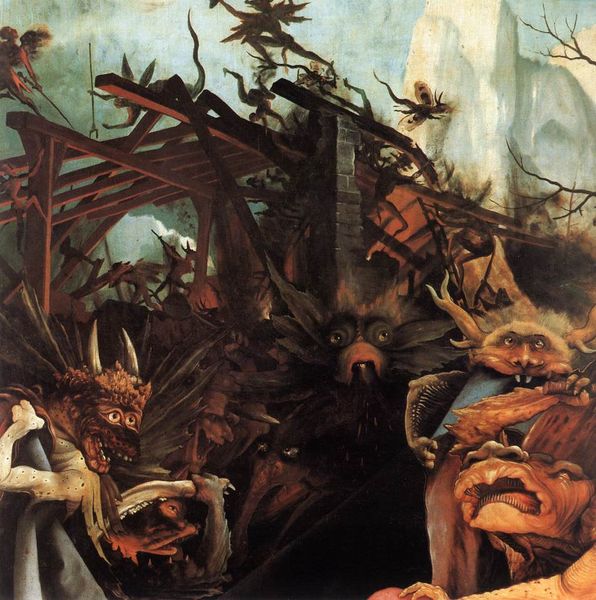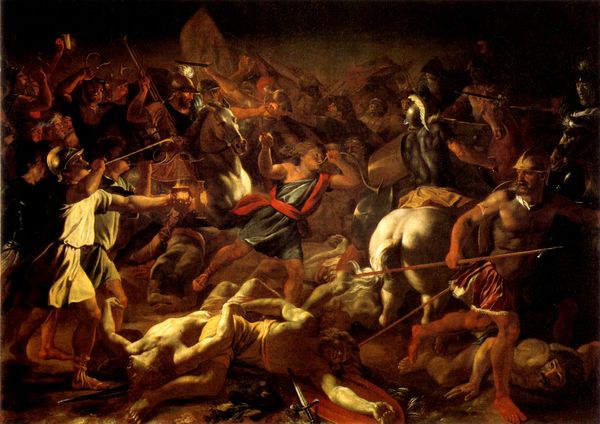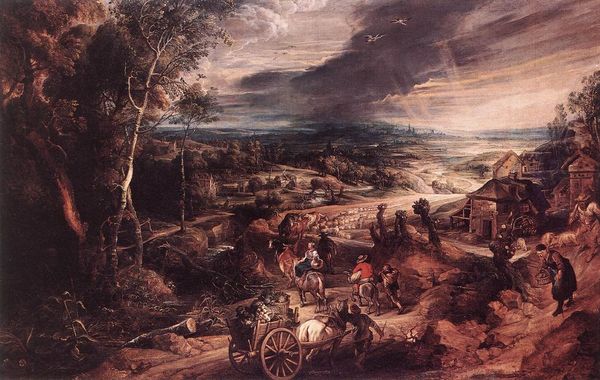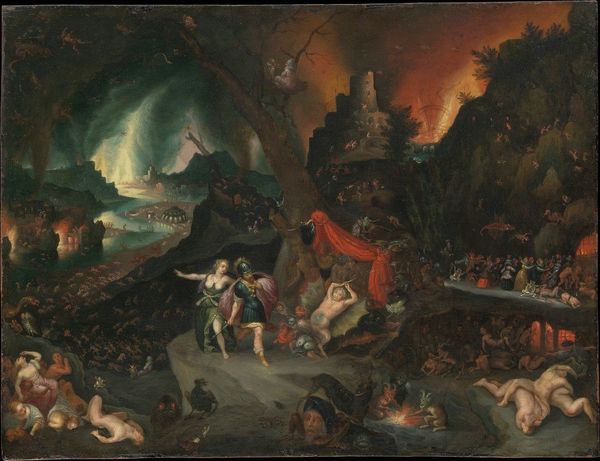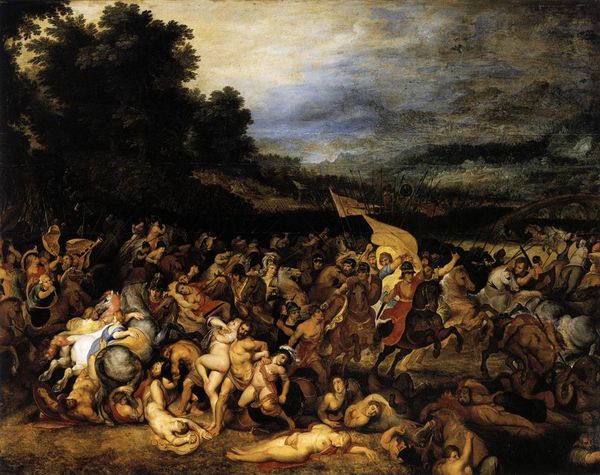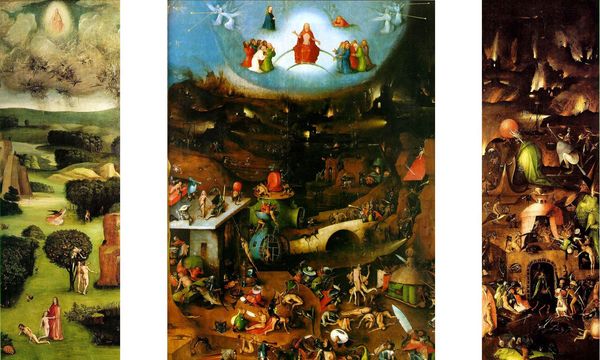
panel, oil-paint
#
panel
#
allegory
#
narrative-art
#
death
#
oil-paint
#
landscape
#
figuration
#
oil painting
#
vanitas
#
christianity
#
history-painting
#
northern-renaissance
Dimensions: 117 x 162 cm
Copyright: Public domain
Editor: Bruegel's "The Triumph of Death," created around 1563 using oil paint on a panel, is incredibly overwhelming. It’s teeming with chaos, figures in torment, and a general sense of apocalyptic dread. What statements about society can we make through our experience of this artwork? Curator: It’s impossible to separate this piece from its historical context. The 16th century was a time of immense upheaval – religious wars, famine, and plagues ravaged Europe. This piece visualizes the omnipresent anxieties around death, reflecting a society wrestling with existential dread. The almost panoramic view presents death as an indiscriminate force affecting all levels of society, doesn't it? Editor: It definitely does. The detail is staggering – the skeletons leading the charge, the variety of ways people are dying... but why depict it on such a massive scale, across this expansive landscape? Curator: The size and detail amplify the message. Bruegel transforms the personal fear of death into a societal critique. Notice how elements like the soldiers and nobles aren't spared? The work illustrates the futility of earthly power and wealth in the face of mortality. The painting underscores how political structures couldn’t shield individuals from larger systemic crises, highlighting inherent vulnerabilities of societal hierarchies. How does this reading sit with you? Editor: It makes complete sense. It becomes less about just death itself and more about the failings of the institutions that should protect people. I initially saw chaos but understanding the historical factors transforms my perspective of the picture and how societies can respond to existential threats. Curator: Precisely. And reflecting on such historical crises perhaps prompts considerations about how current systems might face unforeseen catastrophes and threats and, more generally, it can also spark ideas of how society may remember these same moments in the far future.
Comments
No comments
Be the first to comment and join the conversation on the ultimate creative platform.
